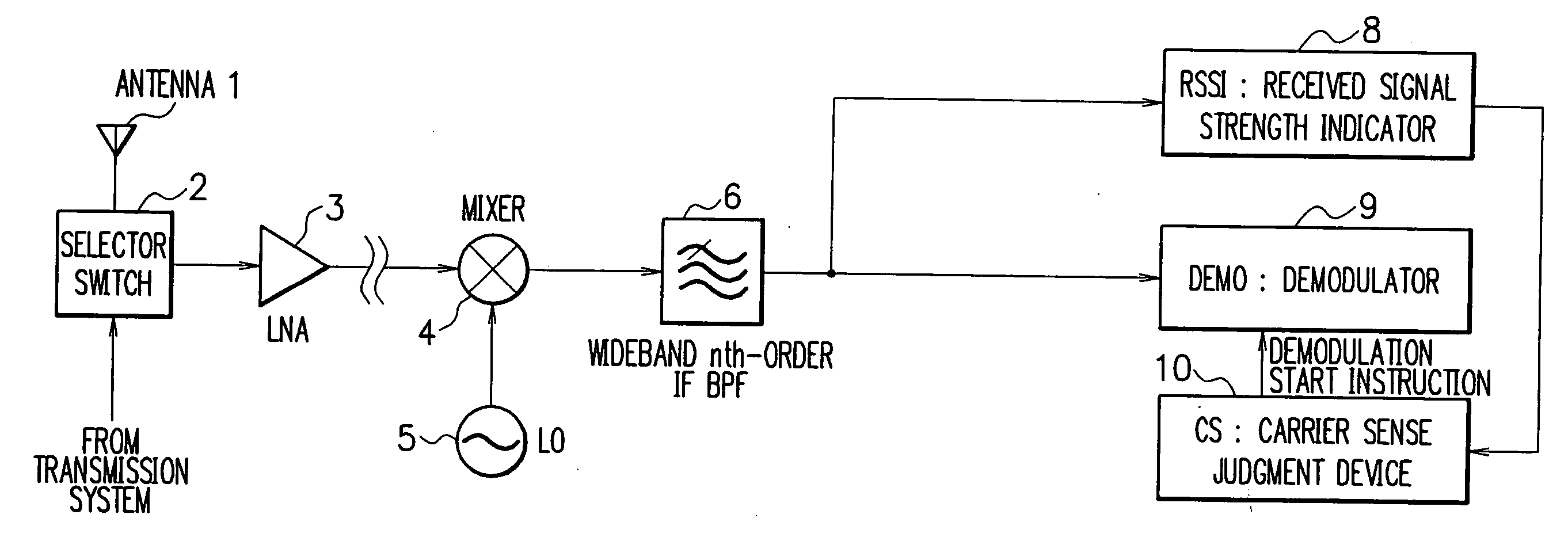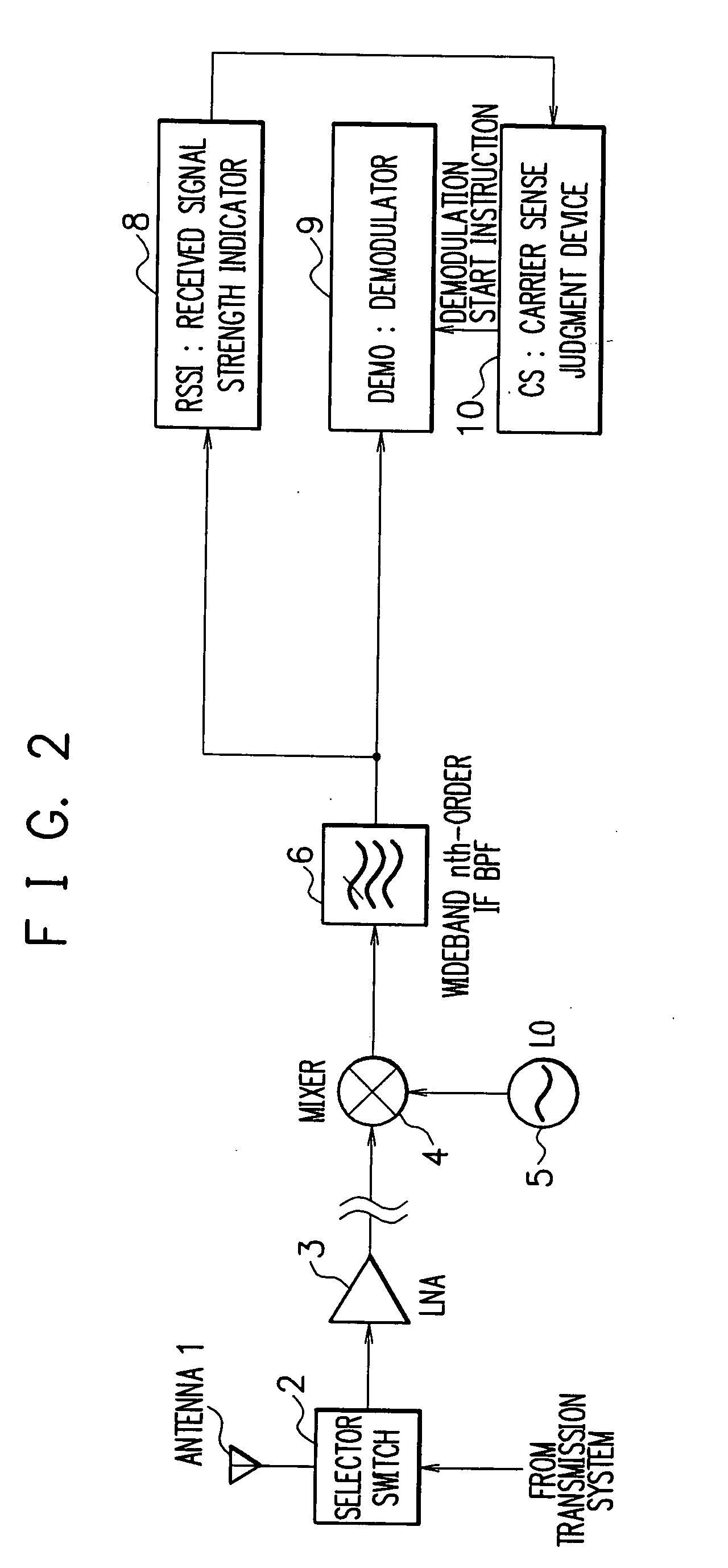Receiver of carrier sense multiplexing connection method and interference suppressing method thereof
a technology of multiple access and receiver, applied in the direction of transmission, transmission monitoring, electrical equipment, etc., can solve the problems of terminal b>24/b>, inability to receive, and inability to avoid the arrangement of cells in frequency, so as to reduce the power components of adjacent channel interference wave power
- Summary
- Abstract
- Description
- Claims
- Application Information
AI Technical Summary
Benefits of technology
Problems solved by technology
Method used
Image
Examples
second embodiment
[0064] That is, the circuitry is characterized in that, in the configuration of the direct conversion receiver, narrowband channel filtering (with narrowband LPFs each having a passband narrower than one half of one-channel occupied band width) and wideband channel filtering (with wideband LPFs each having a passband equal to or wider than one half of one-channel occupied bandwidth) are performed in an RSSI system and a reception / demodulation system, respectively.
first embodiment
[0065] As in the first embodiment, the narrowband filtering, which is performed to decrease the domination of the RSSI system by an adjacent channel interference wave, increases the rate of successful carrier sense as well as the frequency with which necessary demodulation operation starts at proper time for the preamble of a packet from a local channel. When proper demodulation operation starts, local channel reception can be implemented with an ordinary error rate determined by the C / (N+I) ratio by virtue of the wideband filters provided to the demodulation system. Thus, it is possible to maintain adequate communication quality efficiently with resistance to adjacent channel interference.
[0066] Incidentally, in the case where the superheterodyne receiver of the first embodiment has an I / Q baseband interface and perform analog quasi-synchronous detection for the nth-order IF signal, wideband fixed low-pass filters (LPF) 12 and 13, each having a cutoff frequency corresponding to one...
third embodiment
[0071] That is, the circuitry is characterized in that, in the configuration of the superheterodyne receiver, there is provided a variable BPF witch can be controlled so that narrowband channel filtering is performed during RSSI standby operation while wideband channel filtering is performed during subsequent reception / demodulation operation.
[0072] As in the first embodiment, the narrowband filtering, which is performed to decrease the domination of the RSSI system by an adjacent channel interference wave, increases the rate of successful carrier sense as well as the frequency with which necessary demodulation operation starts at proper time for the preamble of a packet from a local channel. When proper demodulation operation starts, local channel reception can be implemented with an ordinary error rate determined by the C / (N+I) ratio by virtue of the wideband filtering. Thus, it is possible to maintain adequate communication quality efficiently with resistance to adjacent channel ...
PUM
 Login to View More
Login to View More Abstract
Description
Claims
Application Information
 Login to View More
Login to View More - R&D
- Intellectual Property
- Life Sciences
- Materials
- Tech Scout
- Unparalleled Data Quality
- Higher Quality Content
- 60% Fewer Hallucinations
Browse by: Latest US Patents, China's latest patents, Technical Efficacy Thesaurus, Application Domain, Technology Topic, Popular Technical Reports.
© 2025 PatSnap. All rights reserved.Legal|Privacy policy|Modern Slavery Act Transparency Statement|Sitemap|About US| Contact US: help@patsnap.com



